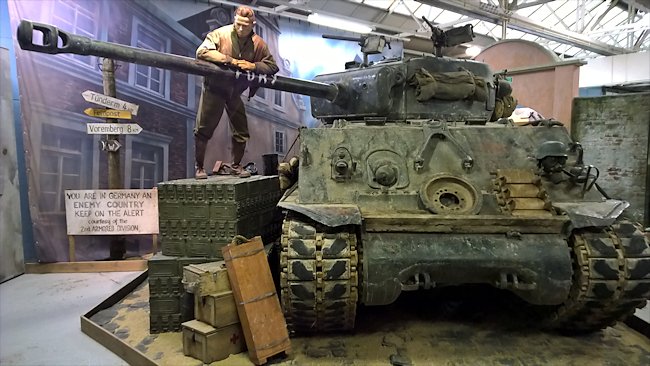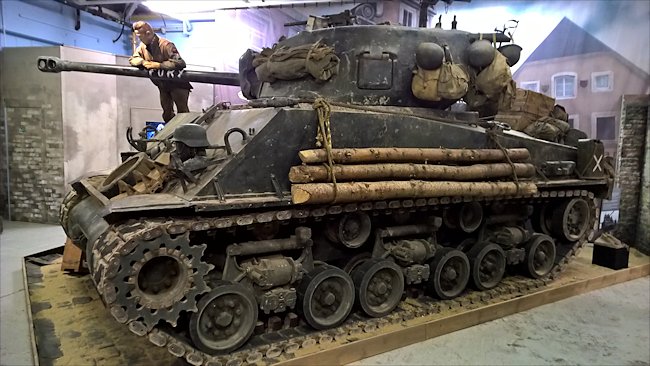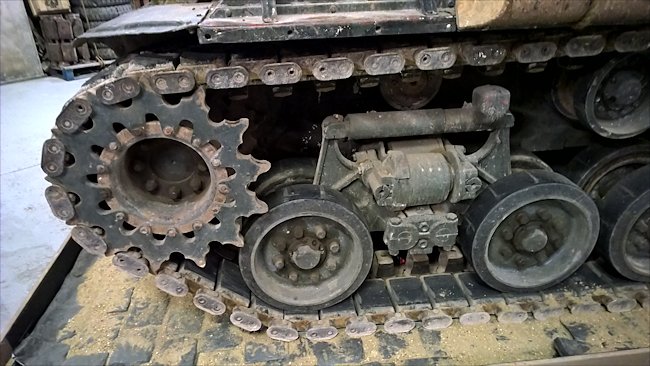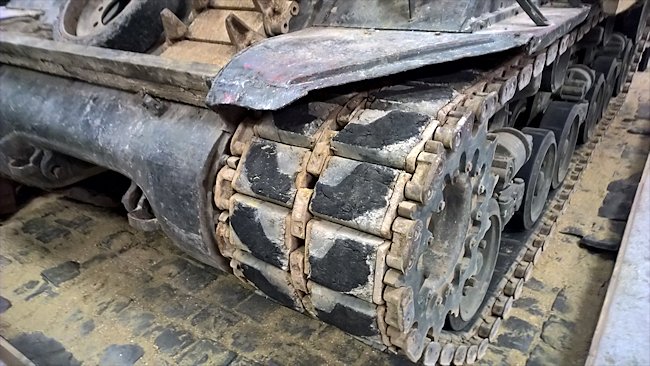The Fury Sherman Tank M4A2(76) HVSS
The Bovington Tank Museum Sherman M4A2(76) was used in the Hollywood WW2 movie called Fury which followed a US tank crew as it battled across north western Europe.

This M4A2(76) HVSS Sherman tank was given the name Fury by the tank crew and they painted its name on the gun barrel. The film gained notoriety because it actually featured the only remaining working Tiger tanks in an action sequence. This was Tiger tank 131 which is also part of the Bovington Tank Museum collection.
It is mentioned in the Movie Fury that the crew had been fighting together since North Afric, which means 1942. The M4A3E8 Easy 8 Sherman tank was not produced until very late 1944, so this version of the Sherman could not have nbeen used by the crew. In fact only only M4 Sherman out of 50,000 built survived the entire war and it is in Canada. So it is likely that Fury's tank crew had survivied the destruction of multipule tnaks and renamed each one 'Fury'.
The M4A2(76) HVSS was a later model of Sherman tank. It featured a number of improvements over the early versions of the M4 Sherman that fought in the north African desert. There were 2 different HVSS tanks used in the film Fury. One was a privately owned M4(105) HVSS hull with a 76mm turret, the other one was Bovington's M4A2(76) HVSS. In the film, these two tanks represent an M4A3(76) HVSS, which was the only 76 HVSS variant used in Europe before May, 1945. There were no M4A1(76) HVSS or M4A2(76) HVSS used in Europe before the end of WW2.
It had wet ammunition storage units which drastically reduced the incidents of these Sherman tanks burning as soon as they got hit. It was also armed with an improved 76mm long barreled gun which could fire a better anti-tank round. Not all the tank crews liked this new gun as it had a much more stronger muzzle blast which could reveal its location to enemy tanks and anti-tank units waiting in ambush in woods and behind hedgerows.

The dust the muzzle blast kicked up during the hot dry summer months in France in 1944 made it much harder to observe the fall of your round. This made it harder to make range adjustments to get an accurate shot on your target.
The higher velocity gun meant that the high explosive HE shells had to have a stronger shell casing to stop them exploding prematurely inside the gun barrel. This meant that the amount of explosive packed into the shell had to be reduced so the round was not as effective against soft skinned vehicles as those fired from the standard 75mm short barrelled guns of the older versions of the Sherman tank.

Most of the time Sherman tanks were getting fired upon in 1944 it was not by enemy tanks but by concealed German anti-tank guns and hand held panzerfaust. When you are dealing with those situations you really want an very effective HE round. This is why by the end of the war US tank units could not get enough of the 105mm howitzer armed Shermans for coping with close quarter combat in urban situations as they advanced further into Germany.
If you compare the suspension units and the track on this late production Sherman to the early models that first arrived on the battlefield in 1943 you will notice a lot of changes.

Who gave the Sherman tank its name?
According to David Fletcher, the British tank historian at the Bovington Tank Museum, the person responsible for giving a lot of the general names to American lend lease tanks shipped over to the British Army was the World War II Prime Minister Winston Churchill. He had problems telling one number from the other. He found it difficult working out what the letters and numbers M3, M4, M5, M7 and M10 stood for. He wanted the tanks to have good names and suggested they be named after American Generals with the proviso that when referring to tanks the prefix rank of General was not to be used. This was to avoid confusion just incase there was a real General Sherman, General Stuart or General Lee on the army strength at that time.

WW2 tank books

